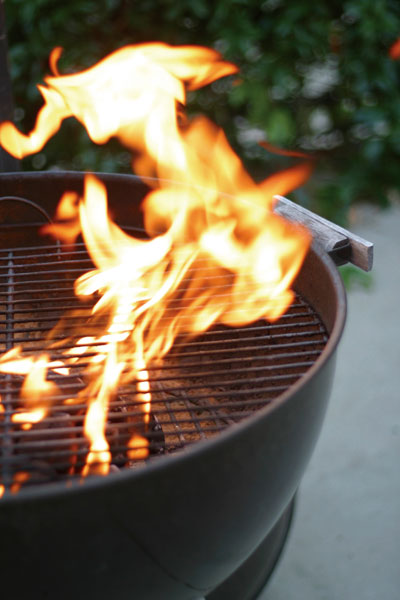
Features
Hot topics
Research
Patio problems
Fire prevention efforts often focus on interior hazards, but new research from the University of the Fraser Valley suggests the exterior of multi-family buildings deserves equal attention.
April 23, 2013
By Len Garis Joe Clare and Karin Mark
Fire prevention efforts often focus on interior hazards, but new research from the University of the Fraser Valley suggests the exterior of multi-family buildings deserves equal attention.
 |
|
| Damage from fires that start outside has been found to be 2.4 times greater than the average loss associated with multi-family building fires. Fires that start outside also require more resources to extinguish and are four times more likely to spread to other properties.
|
Released in January by the university’s Centre for Public Safety and Criminal Justice Research, Fires that Commence on Balconies of Multi-Residential Buildings: The Importance of an External Fire Area of Origin for Residential Fire Outcomes, examined 2,638 fires in multi-family buildings reported to the Office of the Fire Commissioner in British Columbia from 2006 to 2011.
The study found that 255 of these fires (9.7 per cent) originated outside – on a balcony or street-level patio, courtyard or terrace – and damage from outside fires was 2.4 times greater than the average loss associated with multi-family building fires.
While there was no difference in the frequency of injury for outside fires compared to other multi-family fires, the data revealed that outside fires were:
- Less likely to activate a smoke alarm and more likely to require detection by sight or smell;
- More likely to require fire department involvement;
- Less likely to burn out on their own, be controlled by removal or shutoff of the full source, or be controlled by sprinklers;
- More likely to extend to the building and beyond.
The problem
Propane tanks to fuel barbecues are commonly stored on balconies and patios of multi-family buildings, often along with other items such as bicycles, cardboard boxes and furniture. This means that most residents of multi-family properties live within a few metres of a dangerous combination of ignition sources (barbecue or candles) and fuel sources (propane, stored items, cladding and wooden building elements) – in either their own outdoor spaces or those of neighbours.
Delays in detecting outside fires significantly add to the hazard. Outside fires are 5.5 times less likely to be detected by a smoke alarm than other multi-family house fires, and are also 1.4 times more likely to require detection by sight or smell. This means that outside fires that occur when people are typically asleep, or not home or using their outdoor spaces, may have the opportunity to become more entrenched by the time they are detected.
Because of these delays in detection, outside fires tend to require more resources in order to be extinguished. Fires that start outside of buildings are 1.5 times more likely to require the fire department to apply water, and 1.5 times more likely to be controlled by makeshift firefighting aids. Outside fires were also 3.3 times less likely to have burned out on their own, 5.4 times more likely to have been controlled by removal or shutoff of the fuel source, and 3.5 times less likely to have been controlled by a sprinkler system.
The detection delay also contributes to the spread of fires that start outside, which were 1.9 times more likely to extend to the building than other multi-family fires, and 4.1 times more likely to spread beyond the property where the fire started.
Finding solutions
The additional risk associated with outside fires reveal the shortcomings of typical multi-family building fire-protection systems.
In part, these may be addressed by provincial building codes. For example, the British Columbia Building Code now requires sprinklers on balconies (to additional code levels required under NFPA 13), fire-resistant exterior cladding, and additional fire separations in roof areas, while the Alberta Building Code requires balcony sprinklers and improved exterior cladding for low-rise wood-frame buildings. Similar changes are being considered in Ontario for wood-frame buildings.
The study also suggested that, in light of the fire-safety implications of outside fires, the recreational use of propane and storage of other potential fuel sources on multi-family balconies and patios needs to be rethought. For fire prevention purposes, consideration should be given to:
- Prohibiting storage in these areas;
- Developing strategies for earlier detection of outside fires;
- Extending sprinkler detection to cover these areas, where possible.
Whichever combination of techniques is selected, a systems approach is required – one that involves building residents, managers/owners, built-in fire protection strategies and the fire service, while also considering costs, legitimate uses of the outdoor spaces, and storage requirements in multi-family buildings.
The full study can be downloaded from the University of the Fraser Valley, Centre for Public Safety and Criminal Justice Research website, www.ufv.ca/media/assets/criminology/Balcony-Fires.pdf.
Len Garis is the fire chief for the City of Surrey, B.C., an adjunct professor in the School of Criminology and Criminal Justice at the University of the Fraser Valley, and a member of the Institute of Canadian Urban Research Studies (ICURS), Simon Fraser University.
Dr. Joe Clare, the strategic planning analyst for the Surrey Fire Service is an associate professor in the Crime Research Centre, University of Western Australia, and a member of the Institute of Canadian Urban Research Studies, Simon Fraser University. He has experience in Australia and Canada in conducting, operations-focused research with emergency first responders.
Karin Mark is a former newspaper reporter who writes for publications and corporate clients in Metro Vancouver, B.C.
Print this page